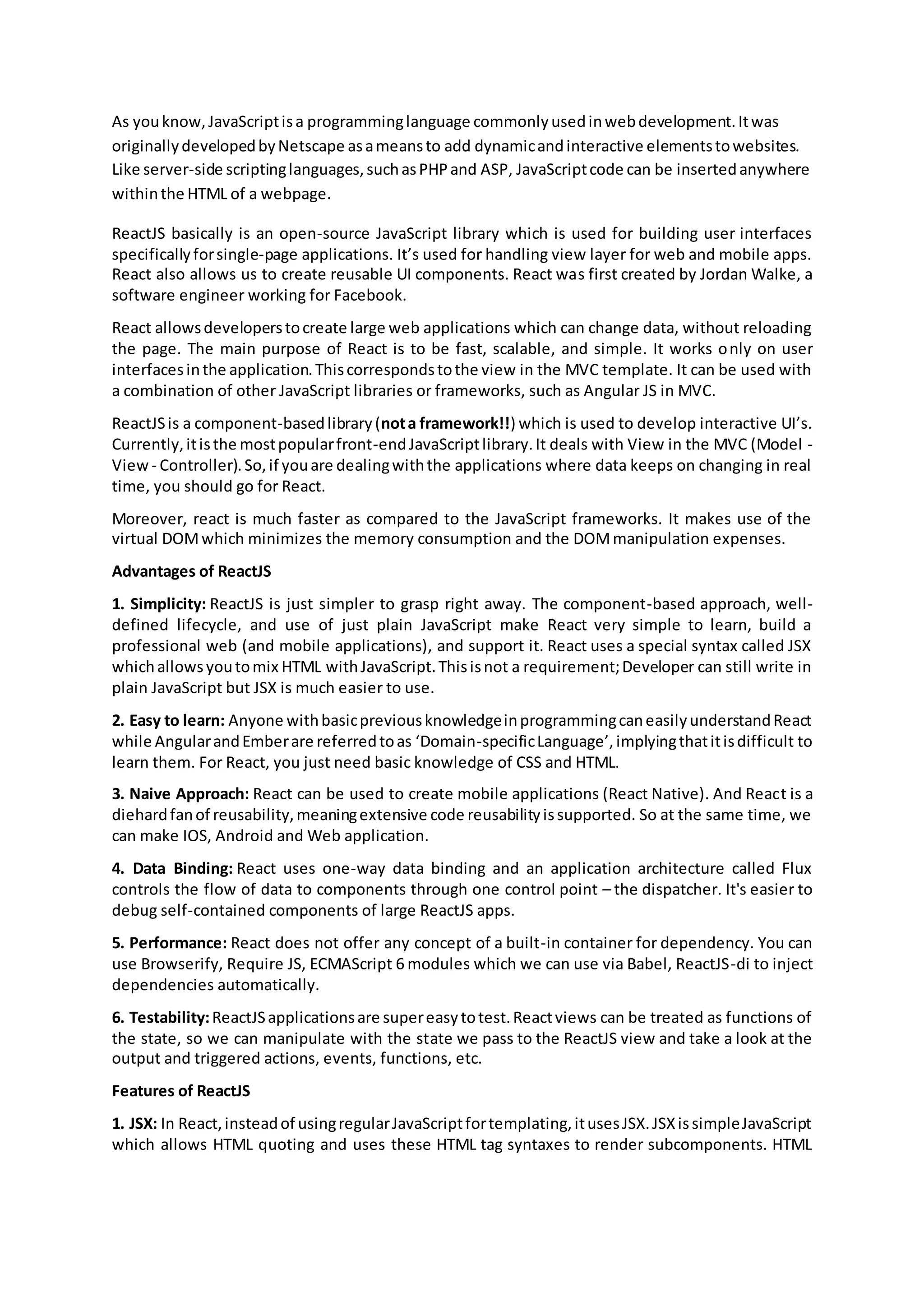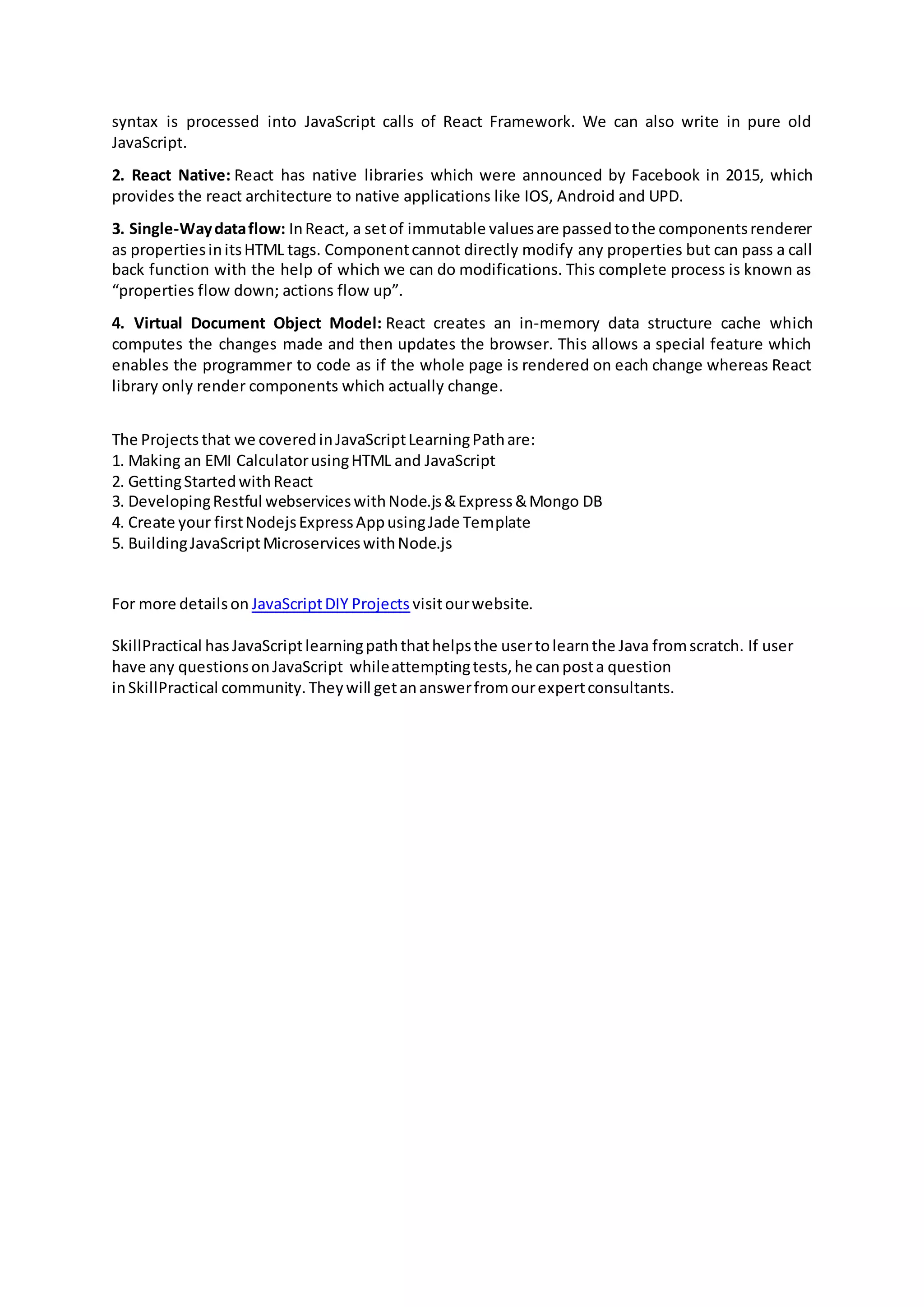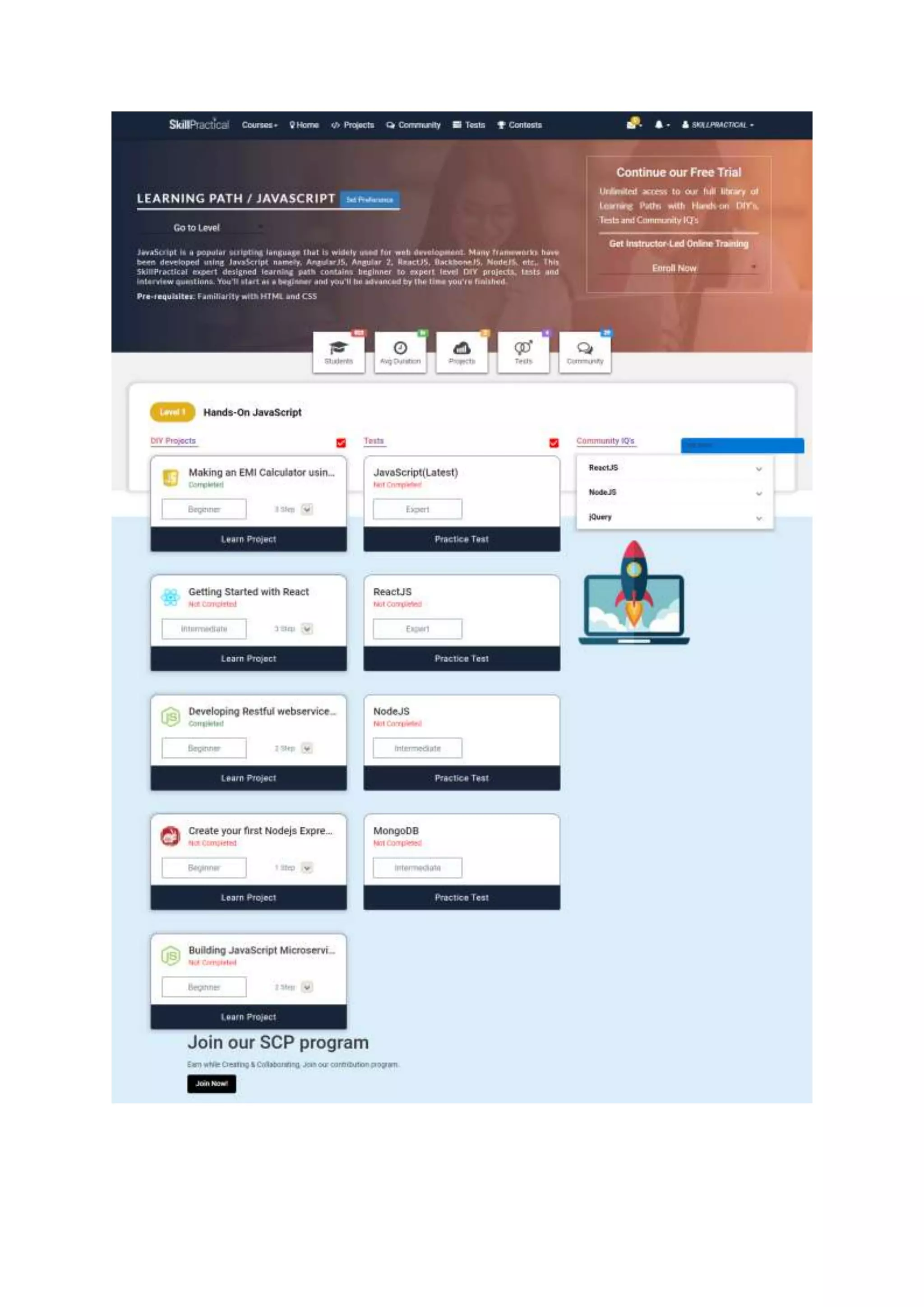JavaScript is a widely-used programming language for web development, initially created by Netscape to introduce dynamic elements to websites. ReactJS is an open-source JavaScript library developed by Facebook for building user interfaces, particularly for single-page applications, and is known for its simplicity, performance, and reusable components. It utilizes JSX for templating, the virtual DOM for efficient updates, and allows for one-way data binding through a flow controlled by a dispatcher.


